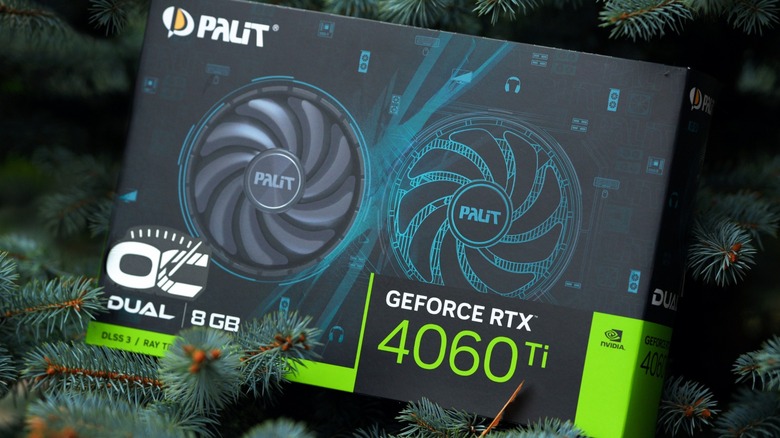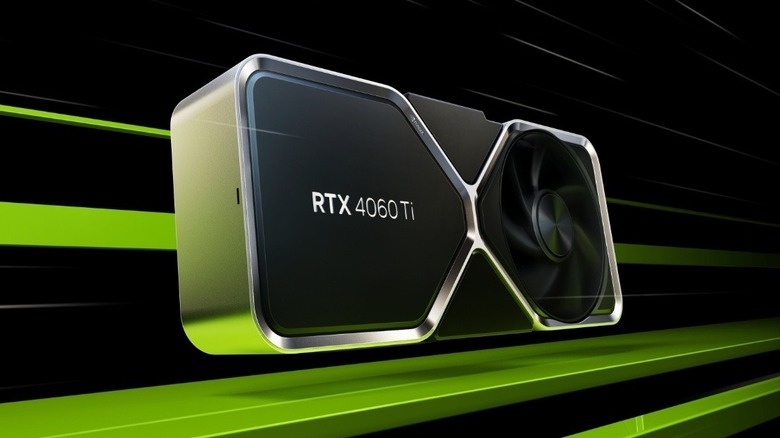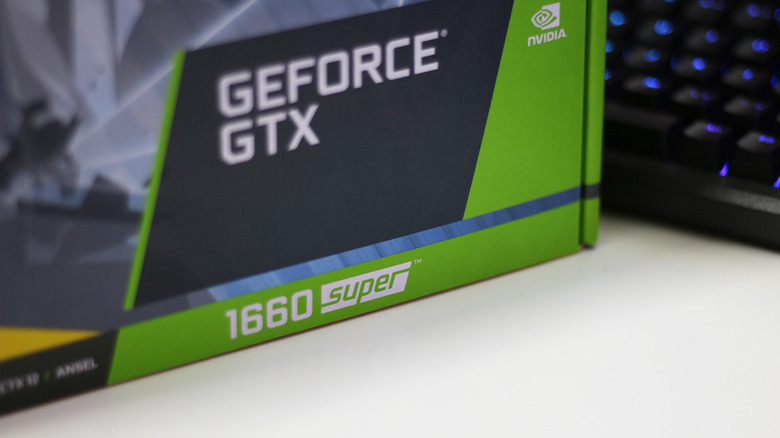What Does Ti Mean On An Nvidia GPU?
The components that affect the budgeting decision for a gaming PC are often the CPU, GPU, and RAM. While a good processor is paramount to ensure high performance, most of us would settle for a cheaper CPU if that allowed for more budget for a beefed-up graphics card. Some of the most popular and demanding titles like “Red Dead Redemption 2” and “Cyberpunk 2077” require a high-end graphics card to push decent frames.
Nvidia manufactures and distributes its chips to most of the major graphics card brands, and with a market cap of $3.6 trillion according to Statista, it is one of the largest tech companies in existence. There is an Nvidia graphics card for every budget, be it the RTX 3060 that’s known for its value, or the absolute powerhouse that the RTX 4090 is.
While Nvidia’s catalog is fairly easy to comprehend, a few wild cards like the “Ti” range of GPUs can make your purchase decision a touch harder. What exactly does “Ti” stand for in Nvidia’s graphics cards, and how are these GPUs different from the other cards that the company offers?
Ti stands for Titanium
Much like the atomic symbol on the periodic table, the “Ti” in Nvidia GPUs stands for Titanium. This notation indicates that a GPU is a slightly better version of its original counterpart. These improvements come in the form of processing power, like extra CUDA cores, faster clock speeds, and higher memory bandwidth. For example, the RTX 4060 features 3,072 CUDA cores, and a base clock speed of 1.83 GHz. In contrast, the RTX 4060 Ti ups the number of CUDA cores to 4,352 and brings the base clock speed up to 2.31 GHz.
CUDA stands for Compute Unified Device Architecture, and in simple terms, it is similar to how CPU cores work. Generally, a higher number of CUDA cores means your graphics card is able to process tasks more efficiently and handle more calculations at the same time. The clock speed of a GPU indicates how many cycles these cores can complete per second. Under heavy workloads, the clock speed of your GPU will boost to a higher number — which is again faster on Ti-branded Nvidia cards.
It’s also not uncommon for Nvidia graphics cards with the “Ti” extension to feature a higher amount of VRAM — and this directly affects the GPU’s ability to handle higher-end games. Put simply, if you find a “Ti” version of an Nvidia GPU, it’s going to offer better performance, which can be a good middle ground between two consecutive series of GPUs, like the RTX 4060 and RTX 4070.
Other variants of Nvidia GPUs
If you take a look at Nvidia’s catalog of current-gen RTX graphics cards, you will not only find “Ti” branded options but also a few ones labeled “Super” and “Ti Super.” These variants are similar in the sense that they both offer better performance over the regular RTX cards. The best way to understand this tiering system is to place the “Super” series in between the non-Ti and Ti models of a GPU. For instance, this is how the RTX 4070 series is positioned based on performance level in increasing order: 4070 > 4070 Super > 4070 Ti > 4070 Ti Super.
Not all graphics cards that Nvidia manufactures have an enhanced “Ti” or “Super” variant, but if you find one that exists, it’s sure to pack in more performance. You don’t have to stick with GPUs from the same generation if you’re looking for the most value — some of the best affordable graphics cards belong to older RTX generations, or from Nvidia’s rival brands like AMD and Intel.
Source: http://www.slashgear.com/1724233/nvidia-gpu-graphics-card-ti-meaning/
 techandtab
techandtab



